Inbox and Environment News: Issue 446
April 12 - 25, 2020: Issue 446
Shellfish Reef Restoration Survey For Recreational Fishing Community
April 7, 2020
Recreational fishers are often described as the 'eyes and ears of our river systems' and their unique knowledge is being sought as part of a project to determine support for shellfish reef restoration in NSW, Kylie Russell, Senior Manager Aquatic Environment, Coastal Systems, NSW Department of Primary Industries (NSW DPI) said today.
“We are canvassing recreational fisher knowledge of natural oyster and shellfish reefs, and their views on reef restoration, in an online survey which will allow the Department to build a more complete picture of where these reefs are still located,” Ms Russell said.
“The loss of shellfish reefs in NSW is the result of a combination of impacts including historical harvesting, loss of suitable hard surfaces, water pollution and disease.
“We’re reaching out to recreational fishers because they have an extensive knowledge of the estuaries they fish in and can provide great insight into the practicality of shellfish reef restoration in their backyard.
“The results from this survey will allow DPI to work in partnership with the recreational fishing community on shellfish reef restoration and build on last year’s successful survey of the NSW oyster industry.”
It is estimated that 99 per cent of oyster reefs in Australia have been lost, with only a handful existing in some bays and estuaries today. Shellfish reefs are complex, living structures made of aggregations of living shellfish and dead shell, such as oysters and mussels.
“Shellfish reefs provide a wide range of free benefits to our waterways and coastal communities including water filtration and the provision of food, shelter and protection for a range of marine creatures including recreational fish species.” Ms Russell said.
“Shellfish reef restoration, including oyster reefs, is one of the suggested mechanisms for restoring estuarine health including improving water quality and boosting fish stocks and is a key management action under the NSW Marine Estate Management Strategy.
“Having recreational fishers participate in this survey and share their extensive knowledge will help us, and a variety of interested groups, to plan and implement future shellfish reef restoration projects. The long-term outcomes will be more fish and better water quality that the fishers can enjoy.”
The Marine Estate Management Strategy is a 10 year whole of government plan to assist in achieving the vision of the marine estate of a healthy coast and sea, managed for the greatest wellbeing of the community, now and into the future.
The survey is available via the Marine Estate Oyster Reef Restoration information page, or direct at Survey Monkey.
The Powerful Owl Project - How To Find Powerful Owls
Published April 11, 2020 by BIBY TV
The Powerful Owl Project aims to inspire the general public, educate and train people to conduct surveys in order to deliver the kinds of data that will assist with conserving this threatened species.
This session covers how to find Powerful Owls, where we are looking for them and highlights the importance of dusk surveys for locating breeding locations.
Find out more about the Powerful Owl Project webpage
The Bandicoot In 1837
Literature and Science. THE BANDICOOT. [FROM THE PENNY CYCLOPAEDIA].
THE Bandicoot is a genus of marsupial mammals, which appears to occupy, in Australia, the situation which the shrews, tenrecs, and other insecticvora fill in the Old .World.. At the time ,of Captain Cook's first voyage,. the only marsupial animals known were the. opossums of America, and .these .formed a' very natural and unique genus, which Linnaus placed among his feres or Carnivora, denominating it Didelphys (double wombed),from the peculiarity of conformation which we shall presently notice. The discovery of Australian mammals, however, which attended the visit of the illustrious navigator above-named to the eastern shores of that new continent, and which was completed by the subsequent settlement of the colony at Port Jackson, brought to light many new forms of marsupial mammals, which differed widely from the genuine opossums, but which were nevertheless associated, by the zoologists.of the day, with the, Didelphyes of Linnaeus, from the single character of their agreement with these animals in the possession of the abdominal pouch. Most, if not all zoologists, are agreed in regarding the marsupials as forming an order of themselves, which is usually placed be tween the Carnivora and Rodentia. The leading character of this'order, and indeed the only one which is common to all the species that it contains, but which is the more marked and valuable from being absolutely'peculiar to this group of animals, consists in the' abdominal pouch or marsupium, from which .the name of the order is derived, and' in: which, as. in a: second; 'womb, the young are deposited upon their exclusion from the real uterus. The period of actual' gestation in these animals is of very short duration.
The production of the young, .as compared with other mammals, may be said to be always premature; but are preserved and nurtured by being deposited in the inarsupium or abdominal pouch, with which. nature has provided the female pa rent for their reception, and in which they continue to reside till they have acquired sufficient, size. and strength: to:go abroad'and shift for themselves. Many other singularities of :form and' habits necessarily result from this peculiarity of physical structure. The animals, which,. more properly form the subject of the present article, the Perameles. of naturalists, and bandicoots of the colonists (a name which properly belongs to the great'rat of India, Musgiganteus, but which, from a vague resemblance in 'size and appearance, the early colonists of Sydney applied to the animals under consideration), though they agree in the most prominent character of their dentition with some of the marsupials, and in the form of their extremities, and the number 'of their toes with others, yet differ essentially from all in their' habits and' economy. In the number, form, and arrangement of their canine and molar teeth,; they agree in all respects with 'the opossums of America and dasyures of Australia; that: is to say, that they have two canines and fourteen molars in each jaw; but they differ widely in .the number of' their incisors, and in this' respect offer a. unique combination which is' found' in no other known genus of mammals.' Of the incisor teeth there are ten in the upper jaw, 'and only six in the lower; and the external on each side,' particularly .in. the upper jaw, is insulated, .and stands apart from the canine and from the other incisors: it is likewise much larger than' the intermediate incisors, and its" form is that . of an ordinary canine tooth, of which,.indeed, it appears to exercise all the functions. The hind legs are considerably longer than the fore, and the number and footpads of the toes are in all' respects similar to' those of the kangaroos. It was this similarity that induced M Geoffrey St. Hilair to suppose that the pace' of the bandicoots also,' resembled that of the kangaroo. This,. however,is far from being the case; the disproportion ,between-their anterior and posterior. extremities, is by no means. so great as to'compel. the bandicoots to hop upon the hind legs only, like the kangaroo, though it is certainly sufficiently so to prevent them from walking like ordinary quadrupeds. Their actual pace resembles that of the hare, and consists of a succession of leaps from the hind to the fore feet, but it is not:very.rapid: nor can they .maintain it for any great length of time.
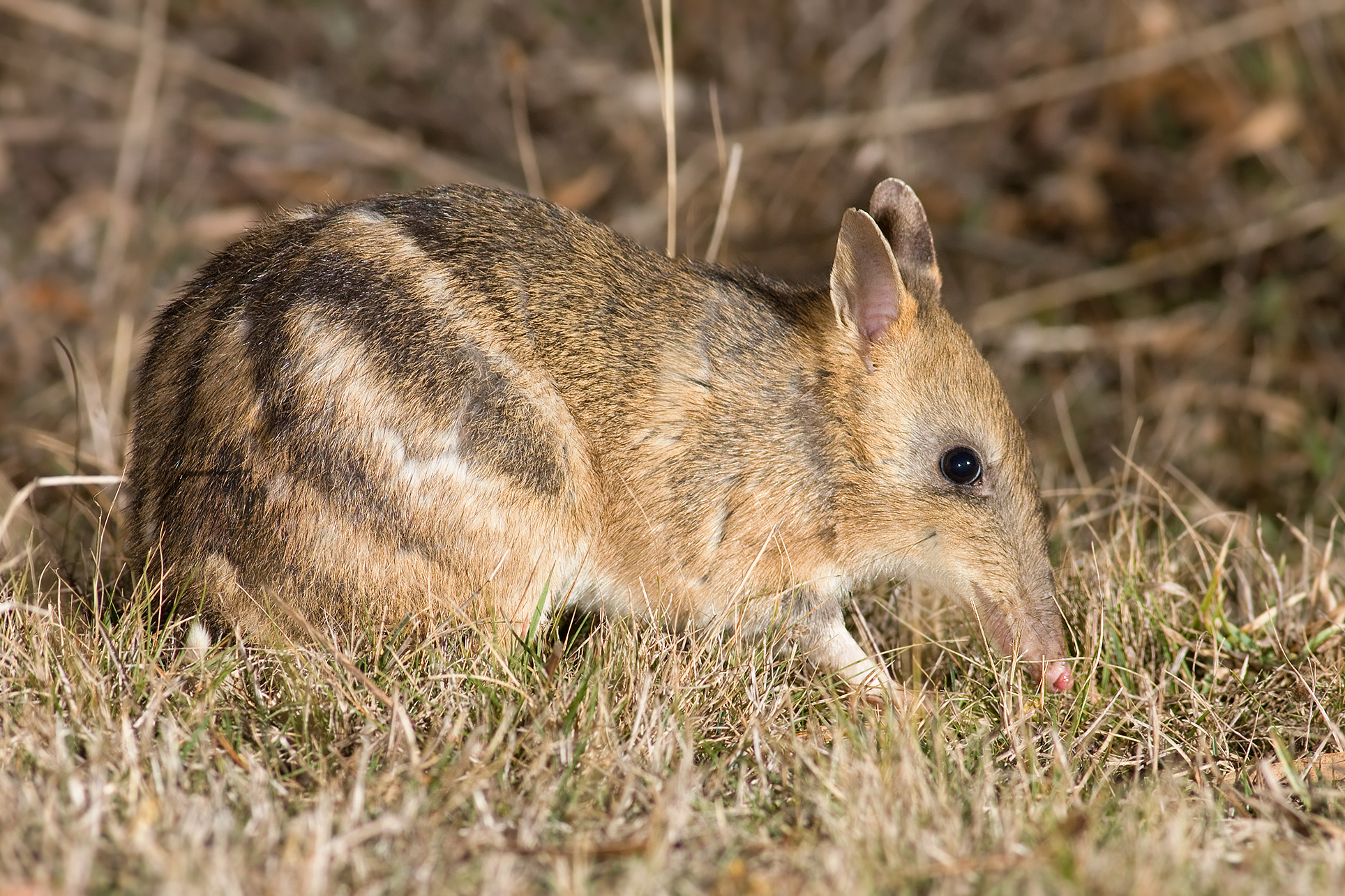
An eastern barred bandicoot - photo by and courtesy JJ Harrison (https://www.jjharrison.com.au/) - Own work
On the fore feet there are five toes, of which the three middle are long and stout,:but the lateral ones are so short that they do' not touch the ground, and are consequently useless in walking, though they may be of great service in burrowing. The hind feet have but four toes each, an'd of these the third is the largest of'all, whilst the two internal are -united .under the same skin, and appear, externally, like a single toe armed with two claws. This is precisely the arrangement and form which we find in the kangaroos ;. but the feet of the bandicoots differ, in being provided with broad powerful claws,.which enable them to.burrow. with astonishing facility. and to scratch up the ground in search of roots. They likewise differ from the kangaroos in having a small fleshy tubercle, in lieu- of a 'thumb,'upon the hind feet, and in having the last, or ungual phalange of the toes divided in front by a small incision; as in the pangolins and ant-eaters, a structure which gives a much firmer attachment to the claw, and vastly increases their power of burrowing. In other respects the bandicoots are chiefly characterised by their long attenuated muzzles, short upright ears, lengthened bodies, and moderate rat-like tails, which are not prehensile, as is. the case with many genera of this order, nor have these animals the power of asceneding trees. With regard to the 'period of gestation, the number of, young, and the mode of their introduction into the abdominal pouch of' the' female parent, we have no observations particularly applicable to the bandicoots. It is only known that they resemble the other marsupials in the premature production of their young, and in nourishing them for some time afterwards in the-abdominal pouch of the mother, and that this pouch contains the mammary organs for that purpose. The following are the only two, species of which we possess authentic descriptions:
1. The long-nosed Bandicoot (P. nasuta, Geoff. Hilaire), measures about a foot and a half in length from the extremity of' the muzzle to the origin of the tail; the head 'is' four inches long, the tail six, the hind ..legs' also six, and the fore legs only three.. The ears are erect, pointed, and covered with short hair; the eyes are particularly small: the nose remarkably long, pointed, :and naked at the extremity; -and the tail attenuated, and, though better covered with hair, bearing some resemblance, to that of a large rat. This organ is not, used by the bandicoot to 'support the body in a sitting'- posture, like that of the kangaroo; neither are the progressive movements of these animals similar to those of the kangaroos. The pace of the bandicoot, as already ob erred, resembles that of our hares and rabbits which certainly approximates. more.nearly to theý salti grade 'pace of the kangaroos, gerboas, and helamys, than any other species of locomotion with which we are acquainted. The. external coat of the long-nosed bandicoot is composed of coarse bristly hair, in colour very nearly resembling that of the common rat (Musdecanamus), except that it is of a more sandy shade' on the upper parts of the body, and of a more clear 'silvery white beneath; under this long outer hair there is an interior coat of soft, ash-coloured wool or fur, which' protects the animal from the cold and variations of temperature, "or it appears to be an inhabitant of the mountainous parts of Australia, principally' if not exclusively. The tail is of a rather darker colour than the. body, and the whole animal, except in the great length and pointed form of the nose, has much the appearance of an overgrown rat. The form and characters of its teeth would lead us to suppose that it fed upon insects and other. similar animal substances; and M. Geoffrey even imagines that it may use its long snout for the purpose of rooting up the earth like a pig in search of worms and grubs : 'the colonists, however, affirm: that 'the bandicoots are purely herbivorous animals, and that the principal part of their food consists of roots, which they dig up with the powerful and sharp claws of their fore feet. In the neighbourhood of human habitations they frequently enter into the granaries, and do as much mischief to the corn as the rats and mice of our own country. The Australians have, however, one advantage over the "European farmer. in this respect, the bandicoot is more easily.excluded than the rat, for it: cannot, like that destructive species of vermin, cut its' way through the' planks and timbers, or even through the brick walls of the buildings. It is probably from this habit of committing petty depredations upon; the farm yards and granaries, as well as from the general similarity of their external appearance, that the colonists of Neirv South Wales sometimes. con found the bandicoots with various species of murine animals originally found in the'country under the common denomination of native rats and mice. Nor is it at all improbable, notwithstanding the assertion of the colonists to the contrary, that M. Geoffroy's conjecture as to the insectivorous habits of this animal may be at least partly if not entirely true. The common rat, with teeth much less adapted for living upon flesh than those of the bandicoots, is well known to [have 'decidedly carnivorous propensities; and, as M. Geoffroy very correctly observes, it is seldom that analogous forms of dentition" fail to indicate analogous appetites.
2. The blunt nosed Bandicoot -(P. obdlusa, Geoff.) is readily distinguished from the last species by the shortness and bluntness of its snout. and by the broad round form of its ears. ,The arrangement of the teeth also differs in some' degree from that of the long-nosed bandicoot. The external incisors are more nearly in contact with the canines and central incisors on each side of them ; the molars immediately succeeding the': canines, and answering to the.false molars of the carnivora, are contiguous to one another and of a triangular form ; and the posterior molars are. more flattened on the crowns. This latter character would seem to intimate that the present species .was more purely herbivorous: than the 'last, and future observation may probably confirm this conjecture. The colour and quality of the hair and fur are the same as in the long nosed bandicoot. These animals are found in Van Dieman's Land and on the Australian' continent, whether the same species inhabit boil' these localities we have not; .a present, the means of determining.
Literature and Science. (1837, December 21). The Colonist (Sydney, NSW : 1835 - 1840), p. 6. Retrieved from http://nla.gov.au/nla.news-article31720168
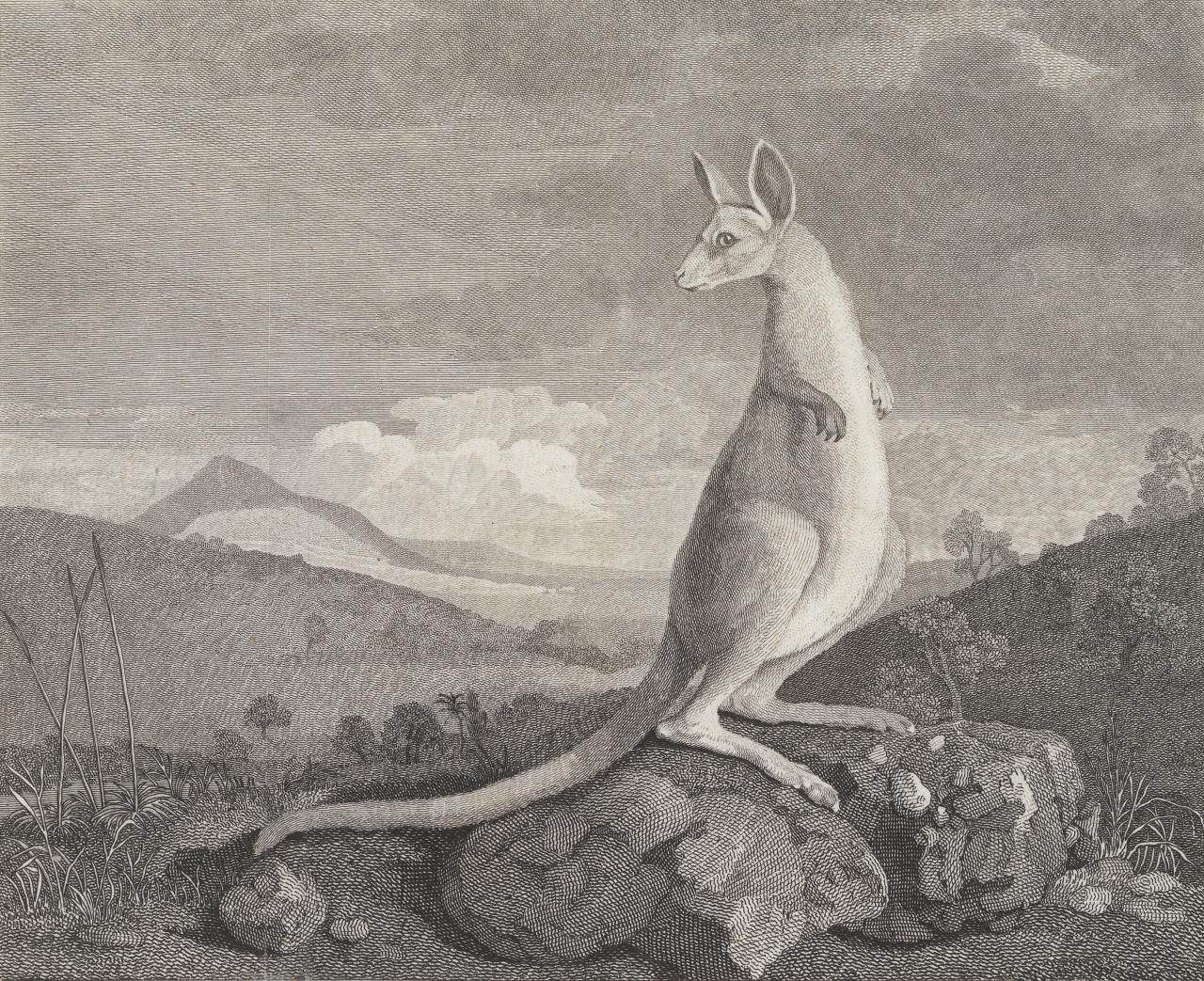
The kanguroo, an animal found on the coast of New Holland (1773) - plate 20 from An Account of the Voyages Undertaken ... for Making Discoveries in the Southern Hemisphere, published by John Hawkesworth, London, 1773, 1st edition
Greater Financial Support For Councils To Address Coastal Erosion
April 7, 2020
The NSW Government has today announced it is increasing financial assistance to councils to help mitigate coastal erosion risks and restore degraded coastal habitats.
Minister for Local Government Shelley Hancock said the funding ratio for eligible projects under approved Coastal Management Programs will increase to 2:1 meaning the State will now contribute $2 to every $1 put in by councils.
"We want to support councils to access available funding to help address their coastal issues," Mrs Hancock said.
"Additionally, in response to feedback from councils, funding rounds will now open in August to enable councils to better align with their budgeting and planning cycles."
A range of low risk actions will be eligible for funding until December 2021 without needing to be in a certified plan.
Low risk actions include:
- beach scraping
- dune stabilisation
- littoral rainforest regeneration
- beach access point management; and
- restoring natural defences to coastal and estuarine hazards.
Greater funding support will also be available for groups of councils that work together to develop Coastal Management Programs, with Joint Organisations now able to make applications under the program.
To encourage council collaboration, where 5 or more councils work together, 20% of the total project cost can now be requested for project management.
"Our State's coastline does not recognise local government boundaries which is why we are making it easier for councils to work together to address coastal issues," Mrs Hancock said.
These changes are part of 32 supported recommendations from a recent review that examined ways of improving councils access to funding under the Coastal and Estuary Management program.
Further information on the Coastal and Estuary Management program is available on the Coastal management programs page.
Dr Paul Grimes Appointed Head Of Environment Energy And Science
April 6, 2020
The NSW Department of Planning, Industry and Environment (DPIE) has announced the appointment of Dr Paul Grimes to the role of Coordinator General Environment, Energy and Science after an extensive national search and competitive process.
Environment Minister Matt Kean said Paul will provide strong leadership in the environment space with his long-standing experience in environment and sustainability policy.
“Having worked in a number of senior roles across all tiers of government, Paul brings with him the right experience for the important work this area of Government does to preserve our environment, support our industries and contribute to a strong economy,” Mr Kean said.
“Paul has previously served for many years in the Commonwealth Government as Secretary of the Department of Sustainability, Environment, Water, Population and Communities and the Secretary of the Department of Agriculture, as well as Associate Secretary in the Department of the Prime Minister and Cabinet and Deputy Secretary in the Department of Finance.
“At the state and territory level, Paul has served as a Deputy Secretary in the South Australian Treasury and as Chief Executive of the ACT Treasury. Most recently, he has been based in Melbourne as the Victorian Public Sector Commissioner.
“Paul will also draw on the breadth of expertise and experience of staff to manage the conservation of our environment and energy resources.
“Protecting our natural environment and its unique native plants and animals, delivering safe, reliable and cost-competitive energy and supporting investment in renewable energy in New South Wales has never been more important,” Mr Kean said.
The Energy and Environment portfolio and DPIE Environment, Energy and Science Group include several key responsibilities:
- Energy, Climate Change & Sustainability
- National Parks & Wildlife Service
- Biodiversity & Conservation
- Policy, Strategy & Science
The NSW Environment Protection Authority (EPA) also sits within the Environment Energy and Science Group of DPIE as an independent statutory agency. The EPA partners with business, government and the community to reduce pollution and waste, protect human health, and prevent degradation of the environment.
“I also want to thank Ms Tracy Mackey who acted in the Coordinator General role during the recruitment process and who has done an exemplary job both during the bushfire crisis and in supporting the waste and energy sectors during the Covid-19 pandemic,” Mr Kean said.
Dr Grimes will commence as the Coordinator General Environment, Energy and Science on Monday 6 April.
Next Stage Of Snowy 2.0 Gets Green Light
April 6, 2020: NSW Department of Planning, Industry and Environment
More than 150 new jobs will be created and $55 million injected into regional NSW, as the NSW Government gives the go-ahead for construction of the Snowy Hydro Segment Factory – the next crucial stage of the Snowy 2.0 expansion.
Deputy Premier and Member for Monaro John Barilaro said the approval of the Snowy Hydro Segment Factory was fantastic news for the region, with construction of the concrete production facility to begin within weeks.
“The Snowy Hydro Scheme is part of the folklore of the Monaro and this approval means work can get underway on a critical part of the project’s infrastructure which will provide huge benefits and job opportunities for the area,” Mr Barilaro said.
“Around 150 jobs will be created as part of the new infrastructure with many of these being entry-level positions, with all training provided.
“These opportunities couldn’t come at a better time with many in our community facing unexpected unemployment due to the COVID-19 pandemic.”
Planning and Public Spaces Minister Rob Stokes said the planning system has a key role to play in keeping the economy moving both now and in the months ahead.
“We’re working to get shovel-ready projects out the door, to create jobs and drive investment into our local economies during these extraordinary times,” Mr Stokes said.
“This project will unlock new industry investment in regional NSW, creating 30 jobs during construction and about 125 jobs once operational.”
Construction of the factory is expected to be completed by the end of the year.
The factory will manufacture more than 130,000 concrete tunnel segments for use during exploratory works and once approved, as part of the main works for Snowy 2.0.
For more information visit https://www.planningportal.nsw.gov.au/major-projects/project/14716
New Water Metering Telemetry System Now Operational
April 7, 2020
The NSW Government has taken the next major step in implementing its high-tech water metering telemetry system, to ensure our most precious resource continues to be properly monitored.
Aaron Walker, Director, Water Renewal Taskforce, said the new telemetry system is operational and ready for the next phase.
“Now that the cloud-based telemetry system is being rolled out, water users can arrange for duly qualified persons to order and install telemetry equipment, such as local intelligence devices (LIDs), as they become available.
“This will enable the secure transmission of water extraction data from water users to the department, delivering tangible benefits to the government, water users and the general community.
“The use of LIDs that can record and transmit water take data in real-time, is a cornerstone of NSW’s non-urban metering rules and will also support NSW’s new floodplain harvesting measurement rules. Both are part of the significant actions implemented in the Water Reform Action Plan to improve water management,” Mr Walker said.
“The new telemetry system will collect and store data received from LIDs, passing it onto the Natural Resources Access Regulator, WaterNSW and the Department of Planning, Industry and Environment-Water. Water users will also be able to access their information via a private online dashboard.
“This information will be used for compliance and enforcement when new metering rules come into force; and progressively in the coming months for billing and other water management functions as this data becomes available,” he said.
“Landholders, with surface water pumps 500mm and above, need to have telemetry installed by 1 December 2020. Having the new telemetry system operating now gives landholders enough time to make sure they have LIDs in place and talking with the new telemetry system before the deadline.
“All other metered surface water works (except pumps less than 200 mm) need to have telemetry installed by the regional roll-out date.
“The department is focused on working with device installers, manufacturers and water users to help them understand how to purchase, install and use these devices, ensuring the transition to this new system is as smooth as possible.
“In particular, device installers such as certified meter installers and certified practising hydrographers, play a critical role in providing guidance and support to water users. They can advise how to comply with the rules and what meter and local intelligence device is right for water users,” Mr Walker said.
The rapidly evolving Covid-19 situation has forced the NSW Government to adjust its plans for face-to-face training and field piloting in April 2020.
“We still plan on undertaking a range of engagements over the second quarter of the year and will publish information on the department’s website about how stakeholders can get involved.
“This phase is an important step in helping to build community confidence in how the state’s water is managed. It shows we are committed to implementing a robust metering framework to improve the standard and coverage of non‑urban water meters across NSW,” Mr Walker said.
The non‑urban water metering framework began in December 2018 and is being implemented through a staged roll-out over five years. It sets clear rules around who needs a meter and ‘telemetry-ready’ equipment, as well as the standards that need to be met, with an aim of making all NSW meters accurate, tamper-proof and auditable.
View more information about NSW Government's Water Reform.
Tumbarumba To Rosewood Rail Trail Opens
April 8, 2020
The first NSW Government-funded rail trail has officially opened at Tumbarumba providing a recreation and tourism asset for the region.
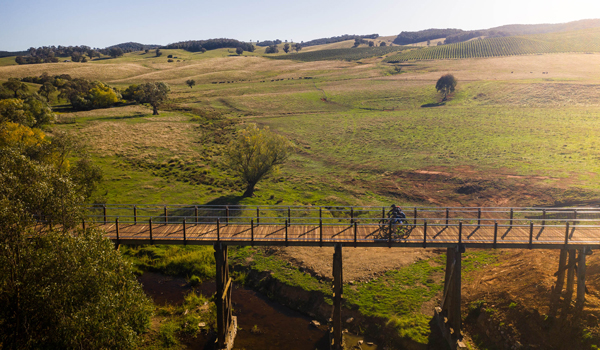 The 21km Tumbarumba to Rosewood Rail Trail, a walking and cycling trail that runs through a non-operational railway corridor, is a pilot for the State and a working model for future rail trails.
The 21km Tumbarumba to Rosewood Rail Trail, a walking and cycling trail that runs through a non-operational railway corridor, is a pilot for the State and a working model for future rail trails.
Snowy Valleys Council received $5.7 million for the project from the NSW Government’s Restart NSW Regional Tourism Infrastructure fund and Round Two of the NSW Government’s Stronger Communities grants.
The Department of Planning, Industry and Environment - Crown Lands assisted with the project. The rail corridor was transferred from Transport for NSW to Crown Lands which created a reserve and then appointed Snowy Valleys Council to manage the corridor as a recreational rail trail.
Member for Albury Justin Clancy joined Snowy Valleys Council Mayor James Hayes, Councillor Julia Ham, the Tumbarumba to Rosewood Rail Trail committee and others to officially open the rail trail via Facebook video.
The opening represented the culmination of years of planning and work by the local council, government agencies, local members of parliament, community groups Riverina Highlands Rail Trails Inc team and the Tumbarumba to Rosewood Rail Trail Committee and Historical Society, and community volunteers.
“This moment truly belongs to all those here who have worked so hard for so long to make this day a reality. I am pleased to represent the Premier of NSW Gladys Berejiklian who has been a strong supporter of the project," Mr Clancy said.
“The successful completion of this project will I hope unlock the opportunity for further projects in Tumbarumba that cement it is as the outdoors destination for NSW, as well as further rail trails across the state."
The Tumbarumba to Rosewood Rail Trail will provide a quality recreation asset that is expected to be a huge drawcard for cyclists, walkers, families, rail enthusiasts and tourists to the region.
The multipurpose sealed trail showcases the region’s natural assets while also preserving and highlighting local rail history. It includes interpretative and informative signage to guide visitors as well as seating for visitors to rest and recover or just take in its views. The trail has been designed to also be suitable for prams, wheelchairs and mobility scooters.
Snowy Valleys Council Mayor James Hayes expected the asset to attract rail trail enthusiasts from across Australia and around the world.
“This rail trail will significantly enhance the Snowy Valleys as a cycling destination and complements existing and future cycling developments across the region including our mountain bike trails and roadside cycling," he said.
First NSW Case Of Pasture Dieback Confirmed On North Coast
April 6, 2020: NSW DPI
The first NSW case of pasture dieback, which kills sown and native summer growing grasses, has been identified on the state’s North Coast.
Producers should contact NSW Department of Primary Industries (DPI) or the Exotic Plant Pest hotline,1800 084 881 if they suspect their pasture has the condition.
NSW DPI Pasture Systems development officer, Sarah Baker, said it’s important to identify where pasture dieback is occurring to determine its spread and impact.
“We aim to provide producers with the information they need to understand, recognise and manage the condition,” Ms Baker said.
“Pasture dieback causes summer growing grasses to turn yellow and red, become unthrifty and eventually die.
“Cases of suspected pasture dieback were reported during the 2018-19 summer, but with drought masking the condition, confirmation was impossible at the time.
“Recent rainfall has assisted us in identifying dieback, which previously had been found only in Queensland.”
It has been estimated the affected area in Queensland is at least 200,000 hectares and could cover up to 4.4 million hectares, with the cause still to be confirmed.
While control options remain dependant on identification of the cause, producers can continue to maintain production with broadleaf species, including legumes and brassicas, which are not affected by dieback.
Re-sowing perennial grasses into dieback affected areas is not recommended. However, annual winter growing forages, including oats and dual-purpose cereals can help fill winter feed requirements.
NSW DPI is working with the Queensland Department of Agriculture and Fisheries, University of Queensland, Queensland University of Technology and industry, through Meat & Livestock Australia, to explore the cause of the condition.
As researchers work to better understand pasture dieback, including investigations of insect involvement, NSW DPI is developing options for future management. More information is available from the NSW DPI website.
Warkworth Mining Fined For Alleged Dust Emission After Blasting Activities
April 7, 2020
The NSW Environment Protection Authority (EPA) has fined Warkworth Mining Ltd $15,000 for allegedly failing to carry out blasting activities in a competent manner.
A mine blast at Warkworth Mine in the Hunter Valley in August last year allegedly resulted in a large dust cloud leaving the premises.
EPA Director Regulatory Operations - Metro North Adam Gilligan said the EPA received complaints regarding a large dust plume travelling over private land and Mount Thorley Industrial Estate .
“It’s alleged that the dust cloud travelled through neighbouring properties and over vehicles using roads adjacent to the mine. After receiving the complaints, the EPA commenced an investigation,” Mr Gilligan said.
The EPA allege that Warkworth Mining did not have appropriate systems in place to minimise dust and fume emissions from blasting.
“Our investigators concluded the mine did not have appropriate measures in place to minimise the impacts on people working and living in the surrounding area, including the industrial estate.
“It’s important for mines to have practical measures and planning in place to provide adequate warnings to its neighbours of potential dust impacts.”
Mr Gilligan said Warkworth Mining had put in place systems to prevent future incidents, and the EPA will also ensure the company develops and implement an effective communications system with its neighbours.
“Managing dust from mining activities is a key issue for the community, and the EPA considers any non-compliance with licence conditions which are designed to protect the community and the environment as a serious matter.”
People can report concerns regarding dust to the EPA on 131 555. All dust complaints made to the Environment Line are being directed to the EPA officers in the field so they can target those areas of most concern to the community.
More Than $1 Million To Clean Up And Tackle Illegal Dumping On Aboriginal Land
April 8, 2020
Thirteen Local Aboriginal Land Councils have been awarded a total of $1,092,270 for community waste projects that clean up and prevent illegal dumping on their land, the NSW Environment Protection Authority (EPA) announced today.
Cowra, Dubbo, Worimi, Illawarra, Mindaribba, Wanaruah, Ngambri, Tibooburra, Amaroo, Cobowra and Menindee Local Aboriginal Land Councils have been awarded a total of $692,270 from the Aboriginal Land Clean Up and Prevention (ALCUP) program.
Cleaning up a heritage property, developing a bush tucker garden, revegetating a historic campground, preventing damage from feral goats, building fences, removing asbestos waste and stopping illegal access to dumping hot spots are among the planned ALCUP projects and clean-up activities.
Moree, Amaroo and Walgett Local Aboriginal Land Councils have been granted a total of $400,000 under the Aboriginal Communities Waste Management Program (ACWMP).
The three ACWMP projects receiving funding will tackle bulky waste and litter in a variety of unique ways, including cleaning out a dam to restock with fish, removing damaged cars, clearing demolished house materials, removing dumped waste from riverbanks, unblocking drains, planting native grasses, growing bush tucker medicines and starting vegetable gardens and chicken-keeping.
Aboriginal community members will be employed by some land councils as rangers or to undertake the work.
EPA Executive Director Regulatory Operations Regional Carmen Dwyer said many Aboriginal communities faced barriers to disposing of waste and rubbish due to lack of services, resources and limited access to waste management facilities.
“This funding will help Local Aboriginal Land Councils tackle issues in their areas,” Ms Dwyer said. “Illegal dumping of waste is a common problem and these grants will help make a big difference to local communities.
“The projects have been awarded grants for the positive impact they will have on each individual community. All of the grant recipients look forward to restoring and protecting their land and creating a safer and cleaner environment for their community.’’
Already $726,181 has been awarded to 21 recipients of ALCUP, funded through Waste Less, Recycle More.
Ms Dwyer said the program encourages community education and partnerships and incorporates cultural activities to reduce and prevent the occurrence of illegal dumping.
“Previously the program has funded clean-up work, surveillance cameras, deterrence signage, education and awareness programs, and bush regeneration. Since 2006 the program has seen 6,108 tonnes of waste cleaned up, 1,344 tonnes of waste safely disposed of at landfills and 1,706 tonnes of materials recycled.”
The $4 million Aboriginal Communities Waste Management Program is funded for four years until 2021.
Ms Dwyer said the successful programs had already had a positive impact on protecting cultural and natural resources from illegal dumping.
“The EPA recognises the difficult and diverse challenges faced in many remote Aboriginal communities and is committed to helping local land councils improve their environment and create long-term change.’’
More information about the ALCUP and ACWMP programs is available on the EPA website.
Birding At Home
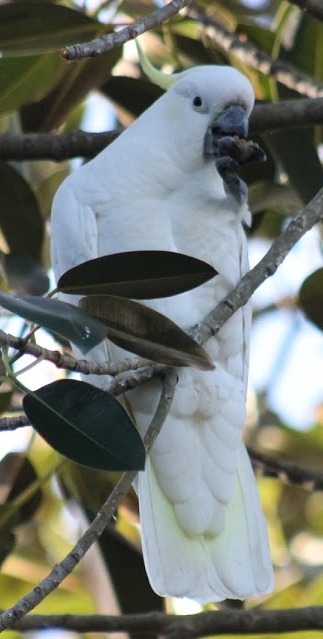 As COVID-19 causes so much heartbreak and sadness around the world, I'm inspired by the bravery of our frontline workers and the spirit of cooperation as we all work together to get through this.
As COVID-19 causes so much heartbreak and sadness around the world, I'm inspired by the bravery of our frontline workers and the spirit of cooperation as we all work together to get through this.
I can assure you BirdLife Australia is continuing its fight to stop extinctions and protect nature, even if many of us are doing this from our own homes. We need you now more than ever.
Thank you to everyone for staying at home as much as possible to stop the spread of the virus and save lives. I know self-isolation can be challenging and stressful at times so what we need right now is nature.
I am so grateful that no matter where you live, you can still see birds and take comfort from them.
Please visit our new Birding at Home page to find out how you and your household can continue to enjoy the beauty of our feathered friends.
You'll find activities to occupy kids while our movements are restricted, links to our Autumn Birds in Backyards survey and Bird Finder, and information on how you can act to protect birds forever.
To help everyone who is now Birding at Home, we are also kicking off a regular live series on Facebook where our bird experts will be taking questions and talking about what we love best - birds.
Even if you are an expert birder, I encourage you to join in for a chat – and please spread the word to all the bird and nature lovers in your life.
These are difficult times and it's important to support each other. We hope our new resources will help you get through these unprecedented times.
Paul Sullivan, CEO
BirdLife Australia
P.S. We'll be having new bird experts every week to talk about a new topic, including Amanda Lilleyman in the NT on shorebirds and Holly Parsons to talk about bird friendly gardens. Make sure you have liked us on Facebook to get notifications!
Handsome Stalker – Striated Heron In Sydney
Published by BIBY TV on April 7, 2020
This adult Striated Heron (Butorides striata ssp. macroryncha) was filmed in March 2020 at Hen and Chicken Bay (Sydney, Australia). This bay is located on Parramatta River and is only about 8km from Sydney’s CBD. As revealed in the opening footage, the area consists of densely populated suburbs. Decades ago though much of Parramatta River was fringed by industry and the water was quite polluted. The river is much cleaner now, as evidenced by foraging birds such as herons, ibis and Bar-tailed Godwits (whose calls can be heard in this video). Nonetheless, they must also contend with the sheer presence of humans, often with boats and/or dogs! So it’s always wonderful to see birds surviving and even thriving in such urban habitat.
We were particularly thrilled to find a Striated Heron out in the open around midday, displaying some of their fascinating feeding behaviour. (The exact location can be seen in the opening scene; look for a little rectangle of cement seen in later footage on the far right of the mudflats.) Striated Herons generally are fairly common and can be found along mainland Australia’s coastline, except for a southern section. However, they are more common in the north, with Sydney being a rough point from where their numbers fall away. Even when these herons are in situ, they can be elusive birds. Often they shelter in shady mangroves when the tide doesn’t suit hunting (for fish or invertebrates), where their hunched posture and muted colouring can easily be overlooked. Sometimes their feeding behaviour is particularly stealthy. One method is to stand still and wait for prey to get close, before their neck unfolds in a flash and prey is seized by that long bill.
They also stalk prey in an almost comical way (as seen here). Those legs and posture remind us of Gollum in Lord of the Rings! And yet...a strikingly handsome bird. Certainly it was the best filming opportunity for us so far with this species. Note that all the behaviour shown was captured in one short session. Clearly the heron is using a tidal channel in the mud/sand to its advantage. The only thing that could make the visit better is seeing a Striated Heron using bait to attract fish, as they are known to do on occasion.
5 big environment stories you probably missed while you've been watching coronavirus
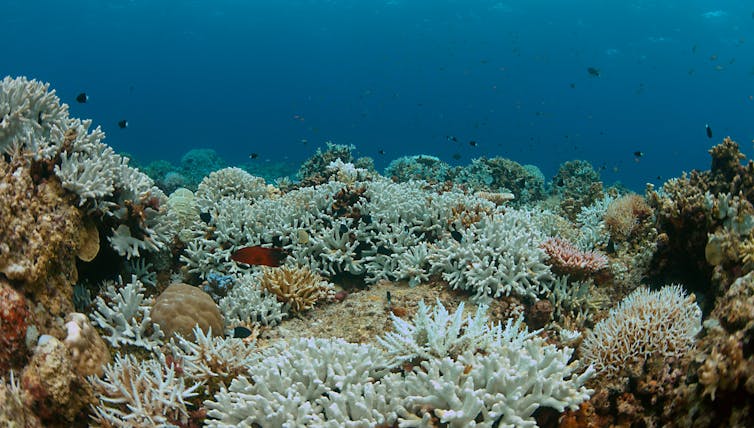
Good news: COVID-19 is not the only thing going on right now!
Bad news: while we’ve all been deep in the corona-hole, the climate crisis has been ticking along in the background, and there are many things you may have missed.
Fair enough – it’s what people do. When we are faced with immediate, unambiguous threats, we all focus on what’s confronting us right now. The loss of winter snow in five or ten years looks trivial against images of hospitals pushed to breaking point now.
As humans, we also tend to prefer smaller, short-term rewards over larger long-term ones. It’s why some people would risk illness and possible prosecution (or worse, public shaming) to go to the beach with their friends even weeks after social distancing messages have become ubiquitous.
But while we might need to ignore climate change right now if only to save our sanity, it certainly hasn’t been ignoring us.
So here’s what you may have missed while coronavirus dominates the news cycle.
Heatwave In Antarctica
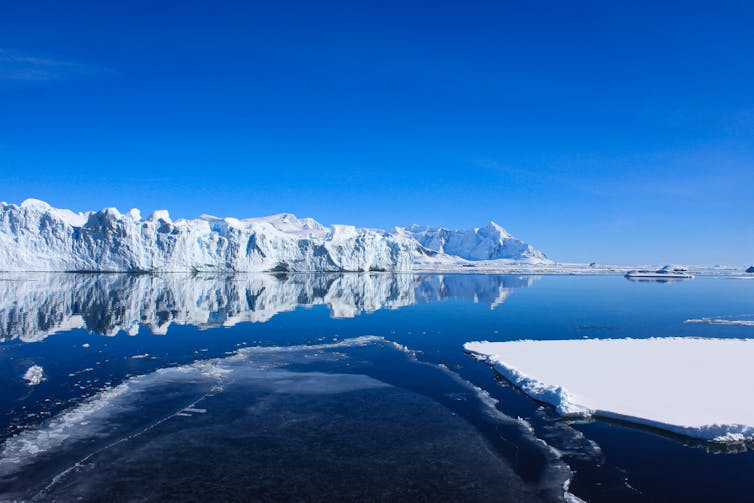
On February 6 this year, the northernmost part of Antarctica set a new maximum temperature record of 18.4℃. That’s a pleasant temperature for an early autumn day in Canberra, but a record for Antarctica, beating the old record by nearly 1℃.
That’s alarming, but not as alarming as the 20.75℃ reported just three days later to the east of the Antarctic Peninsula at Marambio station on Seymour Island.
Read more: Anatomy of a heatwave: how Antarctica recorded a 20.75°C day last month
Bleaching The Reef
The Intergovernmental Panel on Climate Change has warned a global average temperature rise of 1.5℃ could wipe out 90% of the world’s coral.
As the world looks less likely to keep temperature rises to 1.5℃, in 2019 the five-year outlook for Australia’s Great Barrier Reef was downgraded from “poor” to “very poor”. The downgrading came in the wake of two mass bleaching events, one in 2016 and another in 2017, damaging two-thirds of the reef.
And now, in 2020, it has just experienced its third in five years.
Of course, extreme Antarctic temperatures and reef bleaching are the products of human-induced climate change writ large.
But in the short time since the COVID-19 crisis began, several examples of environmental vandalism have been deliberately and specifically set in motion as well.
Read more: We just spent two weeks surveying the Great Barrier Reef. What we saw was an utter tragedy
Coal Mining Under A Sydney Water Reservoir
The Berejiklian government in New South Wales has just approved the extension of coal mining by Peabody Energy – a significant funder of climate change denial – under one of Greater Sydney’s reservoirs. This is the first time such an approval has been granted in two decades.
While environmental groups have pointed to significant local environmental impacts – arguing mining like this can cause subsidence in the reservoir up to 25 years after the mining is finished – the mine also means more fossil carbon will be spewed into our atmosphere.
Peabody Energy argues this coal will be used in steel-making rather than energy production. But it’s still more coal that should be left in the ground. And despite what many argue, you don’t need to use coal to make steel.
Read more: Albanese says we can't replace steelmaking coal. But we already have green alternatives
Victoria Green-Lights Onshore Gas Exploration
In Victoria, the Andrews government has announced it will introduce new laws into Parliament for what it calls the “orderly restart” of onshore gas exploration. In this legislation, conventional gas exploration will be permitted, but an existing temporary ban on fracking and coal seam gas drilling will be made permanent.
The announcement followed a three-year investigation led by Victoria’s lead scientist, Amanda Caples. It found gas reserves in Victoria “could be extracted without harming the environment”.
Sure, you could probably do that (though the word “could” is working pretty hard there, what with local environmental impacts and the problem of fugitive emissions). But extraction is only a fraction of the problem of natural gas. It’s the subsequent burning that matters.
Trump Rolls Back Environmental Rules
Meanwhile, in the United States, the Trump administration is taking the axe to some key pieces of environmental legislation.
One is an Obama-era car pollution standard, which required an average 5% reduction in greenhouse emissions annually from cars and light truck fleets. Instead, the Trump administration’s “Safer Affordable Fuel Efficient Vehicles” requires just 1.5%.
The health impact of this will be stark. According to the Environmental Defense Fund, the shift will mean 18,500 premature deaths, 250,000 more asthma attacks, 350,000 more other respiratory problems, and US$190 billion in additional health costs between now and 2050.
And then there are the climate costs: if manufacturers followed the Trump administration’s new looser guidelines it would add 1.5 billion tonnes of carbon dioxide to the atmosphere, the equivalent of 17 additional coal-fired power plants.
Read more: When it comes to climate change, Australia's mining giants are an accessory to the crime
And So…
The challenges COVID-19 presents right now are huge. But they will pass.
The challenges of climate change are not being met with anything like COVID-19 intensity. For now, that makes perfect sense. COVID-19 is unambiguously today. Against this imperative, climate change is still tomorrow.
But like hangovers after a large celebration, tomorrows come sooner than we expect, and they never forgive us for yesterday’s behaviour.![]()
Rod Lamberts, Deputy Director, Australian National Centre for Public Awareness of Science, Australian National University and Will J Grant, Senior Lecturer, Australian National Centre for the Public Awareness of Science, Australian National University
This article is republished from The Conversation under a Creative Commons license. Read the original article.
Climate Change Triggers Great Barrier Reef Bleaching
April 7, 2020
Australia’s iconic Great Barrier Reef is experiencing its third coral bleaching event in just five years. The 2020 bleaching is severe, and more widespread than earlier events.
“We surveyed 1,036 reefs from the air during the last two weeks in March, to measure the extent and severity of coral bleaching throughout the Barrier Reef region,” said Professor Terry Hughes, Director of the ARC Centre of Excellence for Coral Reef Studies at James Cook University.
“For the first time, severe bleaching has struck all three regions of the Great Barrier Reef – the northern, central and now large parts of the southern sectors,” Prof Hughes said.
Coral bleaching at regional scales is caused by thermal stress due to spikes in sea temperatures during unusually hot summers. The first recorded mass bleaching event along the Great Barrier Reef occurred in 1998, then the hottest year on record. Four more mass bleaching events have occurred since—as more temperature records were broken—in 2002, 2016, 2017, and now in 2020.
This year, February had the highest monthly temperatures ever recorded on the Great Barrier Reef since the Bureau of Meteorology’s sea surface temperature records began in 1900.
“Bleaching isn’t necessarily fatal, and it affects some species more than others,” said Professor Morgan Pratchett, also from Coral CoE at JCU, who led underwater surveys to assess the bleaching.
“A pale or lightly bleached coral typically regains its colour within a few weeks or months and survives,” he said.
However, many corals die when bleaching is severe. In 2016, more than half of the shallow-water corals died on the northern region of the Great Barrier Reef.
“We will go back underwater later this year to assess the losses of corals from this most recent event,” Prof Pratchett said.
“The north was the worst affected region in 2016, followed by the central region in 2017. In 2020, the cumulative footprint of bleaching has expanded further to include the south.”
The distinctive footprint of each bleaching event closely matches the location of hotter and cooler conditions in different years.
“As summers grow hotter and hotter, we no longer need an El Niño event to trigger mass bleaching at the scale of the Great Barrier Reef,” Prof Hughes said.
“Of the five events we have seen so far, only 1998 and 2016 occurred during El Niño conditions.”
The gap between recurrent bleaching events is shrinking, hindering a full recovery.
“We have already seen the first example of back-to-back bleaching—in the consecutive summers of 2016 and 2017,” Prof Hughes said.
After five bleaching events, the number of reefs that have so far escaped severe bleaching continues to dwindle. Those reefs are located offshore, in the far north, and in remote parts of the south.
Climate Change To Affect Fish Sizes And Complex Food Webs
April 6, 2020
Global climate change will affect fish sizes in unpredictable ways and, consequently, impact complex food webs in our oceans, a new IMAS-led study has shown.
Led by IMAS and Centre for Marine Socioecology scientist Dr Asta Audzijonyte and published in the journal Nature Ecology and Evolution, the study analysed three decades of data from 30,000 surveys of rocky and coral reefs around Australia.
Dr Audzijonyte said the study confirmed that changes in water temperature were responsible for driving changes in average sizes of fish species across time and spatial scales.
"Cold blooded animals, especially fish, have long been noted to grow to a smaller size when raised in warmer temperatures in an aquarium," Dr Audzijonyte said.
"If fish grow to smaller sizes in warmer aquaria, it is only natural to expect that global warming will also lead to shrinkage of adult fish size.
"However, average fish body size in wild populations are affected by growth, mortality, recruitment as well as interactions with other organisms and their environment simultaneously and it is unclear how all of these factors are affected by temperature."
The researchers were surprised to find that while temperature has a significant impact, it caused different fish species to react differently.
In some the average fish body size got smaller as predicted (around 55% of species) but in others it increased (around 45%).
In general -- but not universally -- larger species tended to get even bigger in warmer waters, while smaller species tended to get smaller.
Tropical species were more likely to be smaller at the warm end of their distribution ranges.
Most importantly, the species that were smaller at the warmer edges of their habitat ranges were also more likely to get on average smaller with global warming.
"At Tasmanian survey locations, where some of the fastest rates of warming were observed, up to 66% of species showed clear changes in body size."
"As well as happening quite quickly, some of the size changes can also be surprisingly large.
"For example, the change in a median-length temperate fish corresponds to around 12% of its body mass for each 1oC of warming.
"At the current rate of warming, in 40 years this would result in around a 40% change in body length, either increasing or decreasing depending on the species," she said.
Dr Audzijonyte said the varying responses of species to warming would have implications for food webs and ecosystems, including their stability and resilience to other external stressors, such as fishing, coastal pollution and a range of different climate change impacts.
The study was made possible through collaboration between University of Tasmania scientists and government managers across Australia, and by the efforts of over 100 volunteer Reef Life Survey divers, who have undertaken regular surveys at over 1000 sites around the continent.
Asta Audzijonyte, Shane A. Richards, Rick D. Stuart-Smith, Gretta Pecl, Graham J. Edgar, Neville S. Barrett, Nicholas Payne, Julia L. Blanchard. Fish body sizes change with temperature but not all species shrink with warming. Nature Ecology & Evolution, 2020; DOI: 10.1038/s41559-020-1171-0
Cold War Nuclear Bomb Tests Reveal True Age Of Whale Sharks
April 6, 2020
The radioactive legacy of the arms race solves a mystery about the world’s largest fish.
Atomic bomb tests conducted during the Cold War have helped scientists for the first time correctly determine the age of whale sharks.
The discovery, published in the journal Frontiers in Marine Science, will help ensure the survival of the species – the largest fish in the world – which is classified as endangered.
Measuring the age of whale sharks (Rhincodon typus) has been difficult because, like all sharks and rays, they lack bony structures called otoliths that are used to assess the age of other fish.
Whale shark vertebrae feature distinct bands – a little like the rings of a tree trunk – and it was known that these increased in number as the animal grew older. However, some studies suggested that a new ring was formed every year, while others concluded that it happened every six months.
To resolve the question, researchers led by researchers led by Joyce Ong from Rutgers University in New Jersey, USA, Steven Campana from the University of Iceland, and Mark Meekan from the Australian Institute of Marine Science in Perth, Western Australia, turned to the radioactive legacy of the Cold War’s nuclear arms race.
During the 1950s and 1960s, the USA, Soviet Union, Great Britain, France and China conducted tests of nuclear weapons. Many of these were explosions detonated several kilometres in the air.
One powerful result of the blasts was the temporary atmospheric doubling of an isotope called carbon-14.
Carbon-14 is a naturally occurring radioactive element that is often used by archaeologists and historians to date ancient bones and artefacts. Its rate of decay is constant and easily measured, making it ideal for providing age estimates for anything over 300 years old.
However, it is also a by-product of nuclear explosions. Fallout from the Cold War tests saturated first the air, and then the oceans. The isotope gradually moved through food webs into every living thing on the planet, producing an elevated carbon-14 label, or signature, which still persists.
This additional radioisotope also decays at a steady rate – meaning that the amount contained in bone formed at one point in time will be slightly greater than that contained in otherwise identical bone formed more recently.
Using bomb radiocarbon data prepared by Steven Campana, Ong, Meekan, and colleagues set about testing the carbon-14 levels in the growth rings of two long-dead whale sharks stored in Pakistan and Taiwan. Measuring the radioisotope levels in successive growth rings allowed a clear determination of how often they were created – and thus the age of the animal.
“We found that one growth ring was definitely deposited every year,” Dr Meekan said.
“This is very important, because if you over- or under-estimate growth rates you will inevitably end up with a management strategy that doesn’t work, and you’ll see the population crash.”
One of the specimens was conclusively established as 50 years old at death – the first time such an age has been unambiguously verified.
“Although our understanding of the movements, behaviour, connectivity and distribution of whale sharks have improved dramatically over the last 10 years, basic life history traits such as age, longevity and mortality remain largely unknown,” Dr Meekan said.
“Now we have another piece of the jigsaw added.”
Whale sharks are today protected across their global range and are regarded as a high-value species for eco-tourism. AIMS is the world’s leading whale shark research body, and the animal is the marine emblem of Dr Meekan’s home state, Western Australia.
Drs Ong, Meekan, and Campana were aided by Dr Hua Hsun Hsu from the King Fahd University of Petroleum and Minerals in Saudi Arabia, and Dr Paul Fanning from the Pakistan node of the UN Food and Agricultural Organisation.
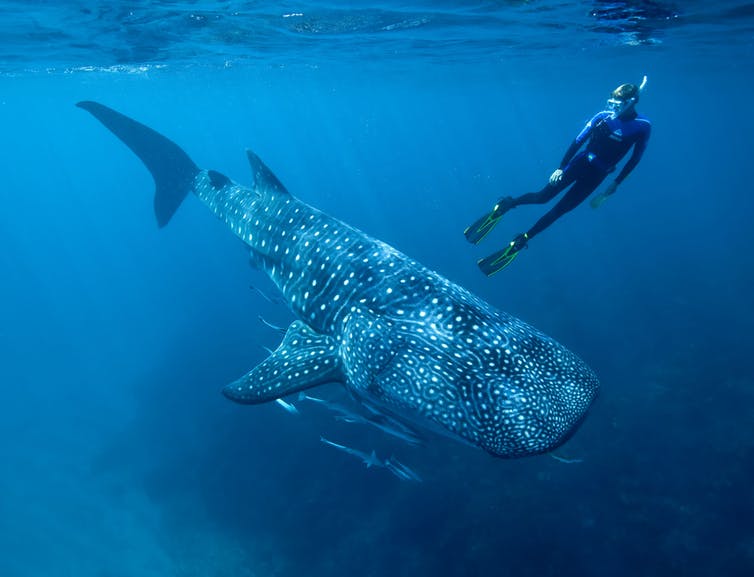
Until now, it’s been difficult to assess the age of whale sharks. Wayne Osborn
Even If The Parks Are Closed You Can Still Go Google Trekking
A few years ago Pittwater Online shared some great news about the state government working with Google in what is called 'Google Trekker' - our own local MP, Rob Stokes, Member for Pittwater was the State Environment Minister at that time, so it was great to hear about this first-hand from him - he loves the great outdoors!
Back in June 2014 the work began of mapping our National Parks - by actually walking through them with a camera - this is what the ranger walking with the camera looked like - they started with doing 16 parks to begin with:
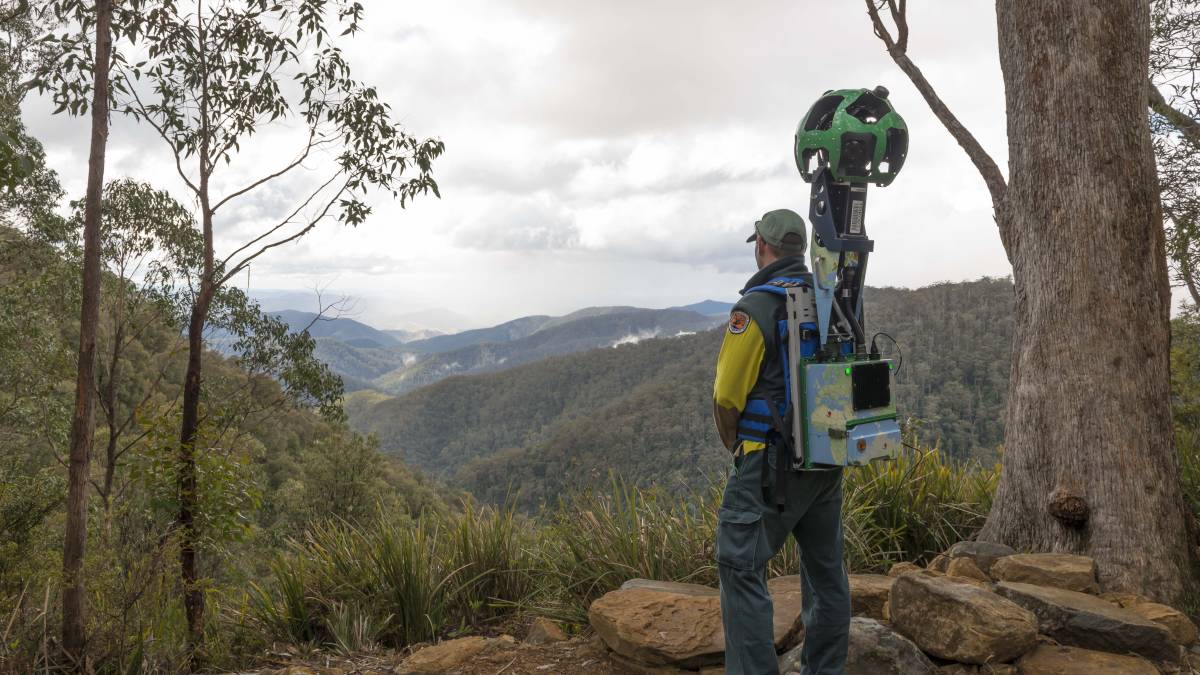
OEH - NPWS photo
Then in November 2014 Environment Minister Rob Stokes launched Google Street View imagery of some of the most picturesque and visited national parks in NSW.
Mr Stokes said the NSW National Parks and Wildlife Service is the first organisation in Australia to be part of the Google program, which sees organisations borrow the Trekker technology to collect imagery of hard to reach places and help map the world.
“NPWS have captured 360-degree imagery of 25 parks from Kosciuszko to Cape Byron, covering over 400 kilometres of walking tracks and 700 kilometres of roads and trails,” Mr Stokes said then.
“This new service means people can scope out walks before they travel, or get a glimpse of places they would otherwise find inaccessible.
“People who have been unable to make it to the bottom of that gorge or the top of that ridge can now see all the sites our national parks have to offer.
"In conjunction with the NSW National Parks website, this imagery will give people another great way to plan their park visits, check walking tracks for suitability and learn about the area beforehand.
“We have a lot to be proud of in NSW with some of the most beautiful and remote places on the planet.
“These maps will ensure people who may not have the ability to walk in some of these popular locations will still have the opportunity to experience our vast natural beauty from their lounge rooms on the other side of the world.”
Basically, Google Trekker allows you to explore our National Parks as though you were on their bush tracks. You can Discover new places with a virtual tour of walking tracks, lookouts and campgrounds on the coast, deep within rainforests, and even in Outback NSW. You can get 360 degree views of these incredible landscapes and go on your own virtual adventure.
Working in partnership with Google, NSW National Parks (NPWS) has captured imagery in over 50 national parks using Google's special backpack-mounted trekker. With more than 1350km of Google Trekker footage, there are hundreds of experiences to discover.
You can also visit beautiful and historic places all over the world via Google Trekker - but let's start with places around us to begin with.
Where would you like to visit today?: Here are some of our favourite Street View virtual tours - just click on the links to take a look around for yourself
Sydney and Surrounds
- Aboriginal Heritage walk in Ku-ring-gai Chase National Park
- Barrenjoey Lighthouse and Headland in Ku-ring-gai Chase National Park
- Bouddi Coastal walk in Bouddi National Park
- Bradleys Head to Chowder Bay walking track in Sydney Harbour National Park
- Cliff Top walking track in Blue Mountains National Park
- Henry Head walking track in Kamay Botany Bay National Park
- O'Hares Creek lookout in Dharawal National Park
- The Coast track in Royal National Park
North Coast NSW
- Barrington trail in Barrington Tops National Park
- Cape Byron walking track in Cape Byron State Conservation Area
- Crowdy Gap campground in Crowdy Bay National Park
- Pinnacle walk and lookout in Border Ranges National Park
- Tomaree Head summit walk in Tomaree National Park
- Sea Acres Boardwalk in Sea Acres National Park
- Yuraygir coastal walk in Yuraygir National Park
South Coast NSW
- Light to Light walk in Ben Boyd National Park
- Montague Island walking track in Montague Island Nature Reserve
- Pigeon House Mountain Didthul walking track in Morton National Park
- Pretty Beach to Snake Bay walking track in Murramarang National Park
- Robertson lookout in Illawarra Escarpment State Conservation Area
- White Sands walk and Scribbly Gum track in Jervis Bay National Park
Country NSW
- Belougery Split Rock walking track in Warrumbungle National Park
- Breadknife and Grand High Tops walking track in Warrumbungle National Park
- Kanangra Boyd lookout in Kanangra-Boyd National Park
- The Lookdown lookout in Bungonia National Park
- West Rim walking track in Morton National Park
Snowy Mountains- Kosciuszko National Park
- Jillabenan Cave at Yarrangobilly Caves
- Kosciuszko walk - Thredbo to Mount Kosciuszko
- Mount Kosciuszko summit walk
- Perisher
- Snow Gums Boardwalk
- South Glory Cave at Yarrangobilly Caves
- Thredbo Alpine Village
Outback NSW and Murray-Riverina
- Mungo self-guided drive tour in Mungo National Park
- Valley of the Eagles walk in Gundabooka National Park
- Walls of China in Mungo National Park
Please note: The backpack-mounted trekker has been specifically designed to go off the grid. Occasionally, trained NPWS staff take Google Trekker into ecologically sensitive areas so we can give you a peek of places you would otherwise never see.
When you explore these walking tracks for yourself, remember to always to stay on marked tracks, so we can continue to protect these special places for generations to come.
Weed Cassia Now Flowering: Please Pull Out And Save Our Bush
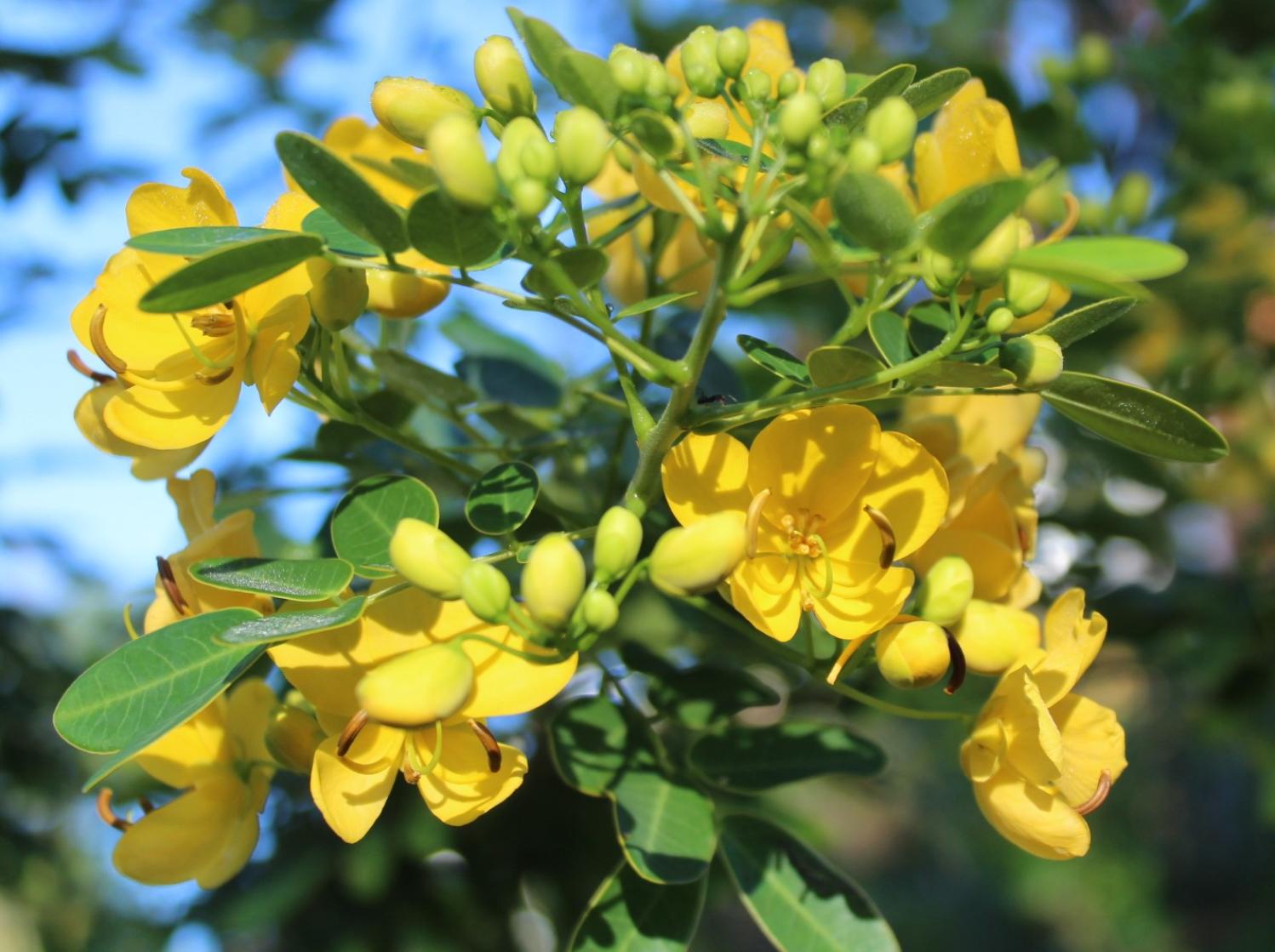
Please Help Sydney Wildlife Rescue: Donate Your Cans And Bottles And Nominate SW As Recipient
You can Help Sydney Wildlife help Wildlife. Sydney Wildlife Rescue is now listed as a charity partner on the return and earn machines in these locations:
- Pittwater RSL Mona Vale
- Northern Beaches Indoor Sports Centre NBISC Warriewood
- Woolworths Balgowlah
- Belrose Super centre
- Coles Manly Vale
- Westfield Warringah Mall
- Strathfield Council Carpark
- Paddy's Markets Flemington Homebush West
- Woolworths Homebush West
- Caltex Concord road Concord West
- Bondi Campbell pde behind Beach Pavilion
- Westfield Bondi Junction car park level 2 eastern end Woolworths side under ramp
- UNSW Kensington
- Enviro Pak McEvoy street Alexandria.
Every bottle, can, or eligible container that is returned could be 10c donated to Sydney Wildlife.
Every item returned will make a difference by removing these items from landfill and raising funds for our 100% volunteer wildlife carers. All funds raised go to support wildlife.
It is easy to DONATE, just feed the items into the machine select DONATE and choose Sydney Wildlife Rescue.
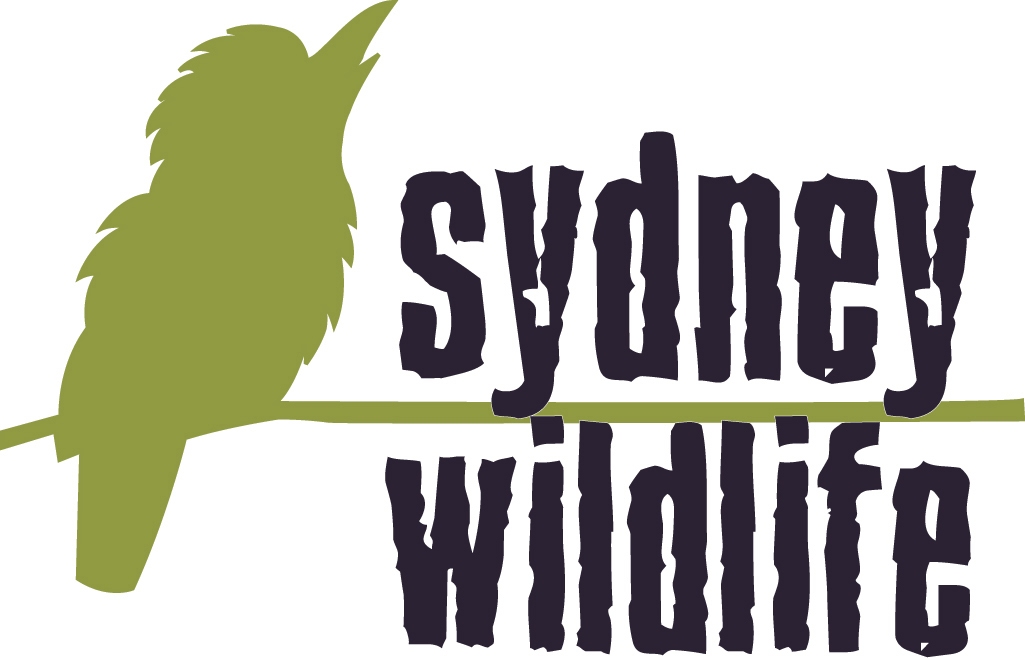
Bushcare In Pittwater
Where we work Which day What time
Avalon
Angophora Reserve 3rd Sunday 8:30 - 11:30am
Avalon Dunes 1st Sunday 8:30 - 11:30am
Avalon Golf Course 2nd Wednesday 3 - 5:30pm
Careel Creek 4th Saturday 8:30 - 11:30am
Toongari Reserve 3rd Saturday 9 - 12noon (8 - 11am in summer)
Bangalley Headland 2nd Sunday 9 to 12noon
Bayview
Winnererremy Bay 4th Sunday 9 to 12noon
Bilgola
North Bilgola Beach 3rd Monday 9 - 12noon
Algona Reserve 1st Saturday 9 - 12noon
Plateau Park 1st Friday 8:30 - 11:30am
Church Point
Browns Bay Reserve 1st Tuesday 9 - 12noon
McCarrs Creek Reserve Contact Bushcare Officer To be confirmed
Clareville
Old Wharf Reserve 3rd Saturday 8 - 11am
Elanora
Kundibah Reserve 4th Sunday 8:30 - 11:30am
 Mona Vale
Mona Vale Mona Vale Beach Basin 1st Saturday 8 - 11am
Mona Vale Dunes 2nd Saturday +3rd Thursday 8:30 - 11:30am
Newport
Bungan Beach 4th Sunday 9 - 12noon
Crescent Reserve 3rd Sunday 9 - 12noon
North Newport Beach 4th Saturday 8:30 - 11:30am
Porter Reserve 2nd Saturday 8 - 11am
North Narrabeen
Irrawong Reserve 2nd Saturday 2 - 5pm
Palm Beach
North Palm Beach Dunes 3rd Saturday 9 - 12noon
Scotland Island
Catherine Park 2nd Sunday 10 - 12:30pm
Elizabeth Park 1st Saturday 9 - 12noon
Pathilda Reserve 3rd Saturday 9 - 12noon
Warriewood
Warriewood Wetlands 1st Sunday 8:30 - 11:30am
Whale Beach
Norma Park 1st Friday 9 - 12noon
Western Foreshores
Coopers Point, Elvina Bay 2nd Sunday 10 - 1pm
Rocky Point, Elvina Bay 1st Monday 9 - 12noon
Gardens And Environment Groups And Organisations In Pittwater
Pittwater Reserves
Aussie Bread Tags Collection Points

UNSW Installs First Magnetic Particle Imaging Facility In Australia
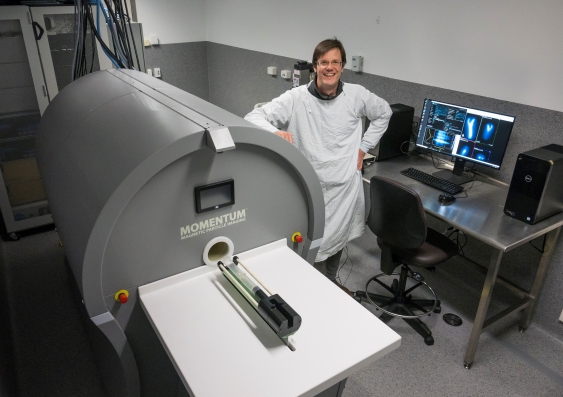
Far Stars Firmly In Sight Thanks To Telescope Teamwork
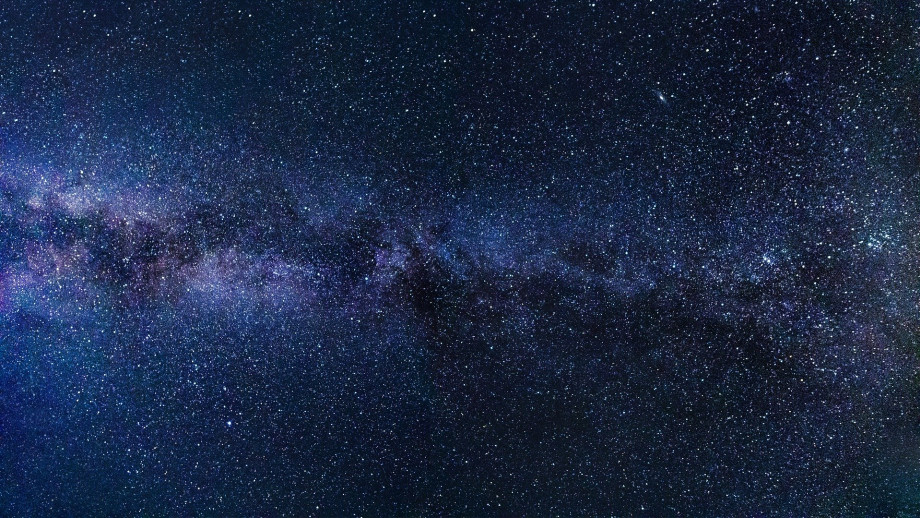
Tooth Be Told: Earless Seals Existed In Ancient Australia
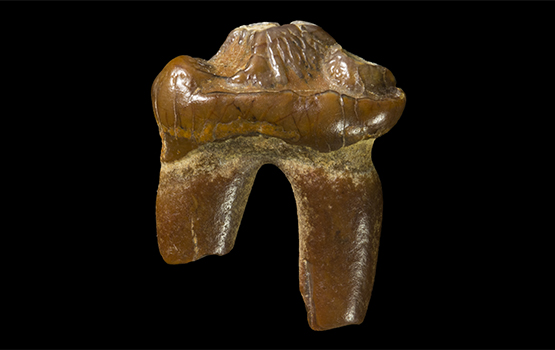
Small Biases Multiply Into Big Career Impacts For Australia's Female Surgeons
- Workplace conditions, including lack of flexibility, long work hours and changing places of work during training, which can disproportionately affect women, and a scarcity of female mentors and role models
- Challenges to credibility, such as patients assuming the female surgeon is a nurse or a junior, or their skills and knowledge being questioned
- Expectations that female surgeons will take on additional caring or peacemaking duties for distressed patients or spend longer and provide better communication with patients
- Objectification and sexualisation by patients and colleagues
Don’t Forget Our Kids: OT Researchers Urge Extra Support For Home Schooling Vulnerable Children
Traces Of Ancient Rainforest In Antarctica Point To A Warmer Prehistoric World
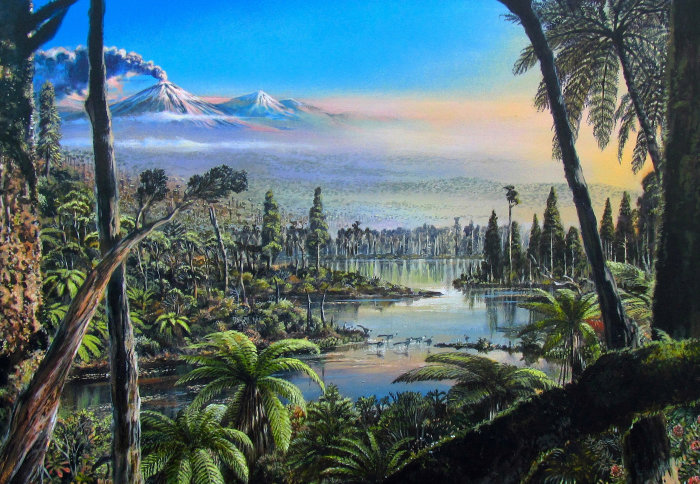
Disclaimer: These articles are not intended to provide medical advice, diagnosis or treatment. Views expressed here do not necessarily reflect those of Pittwater Online News or its staff.